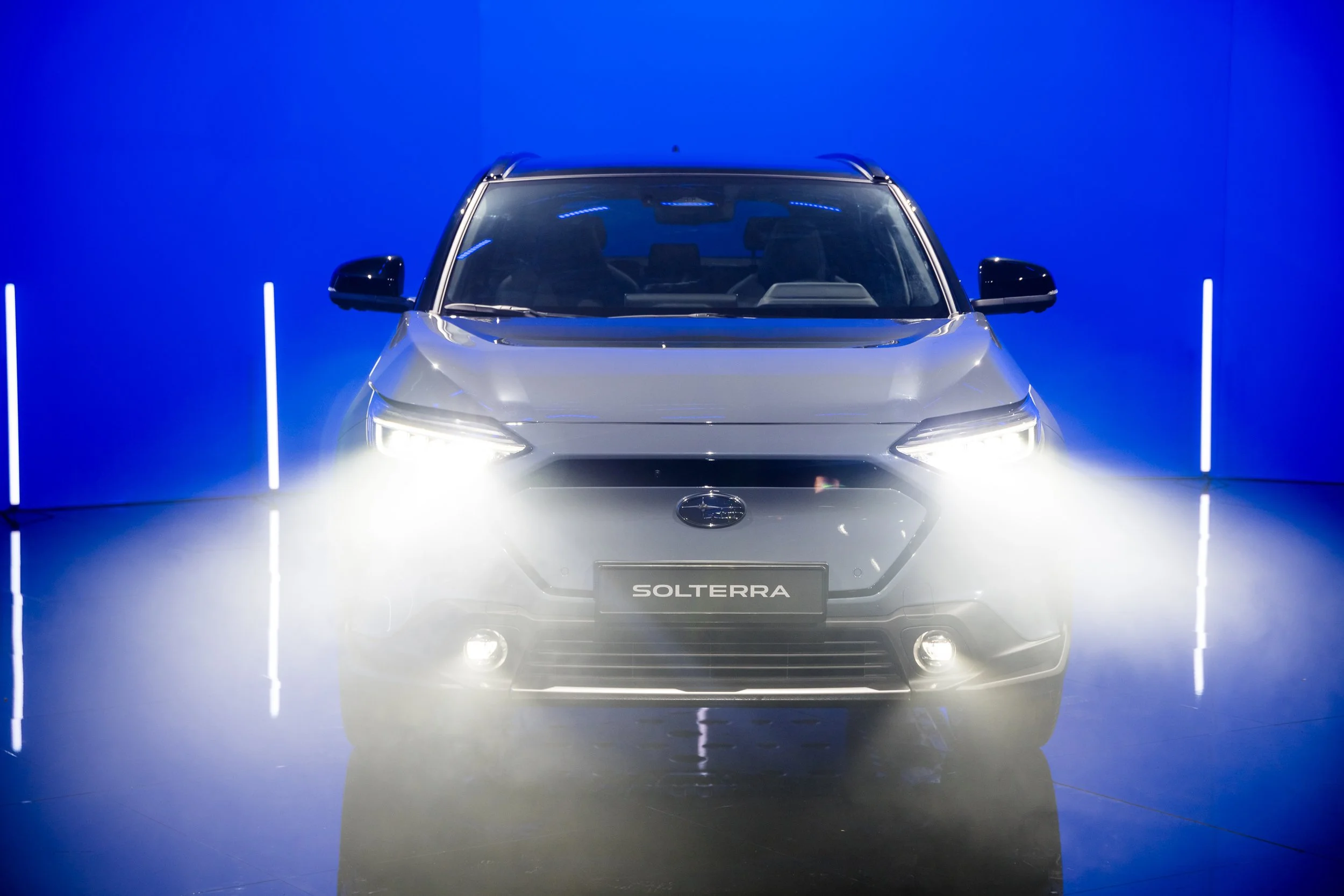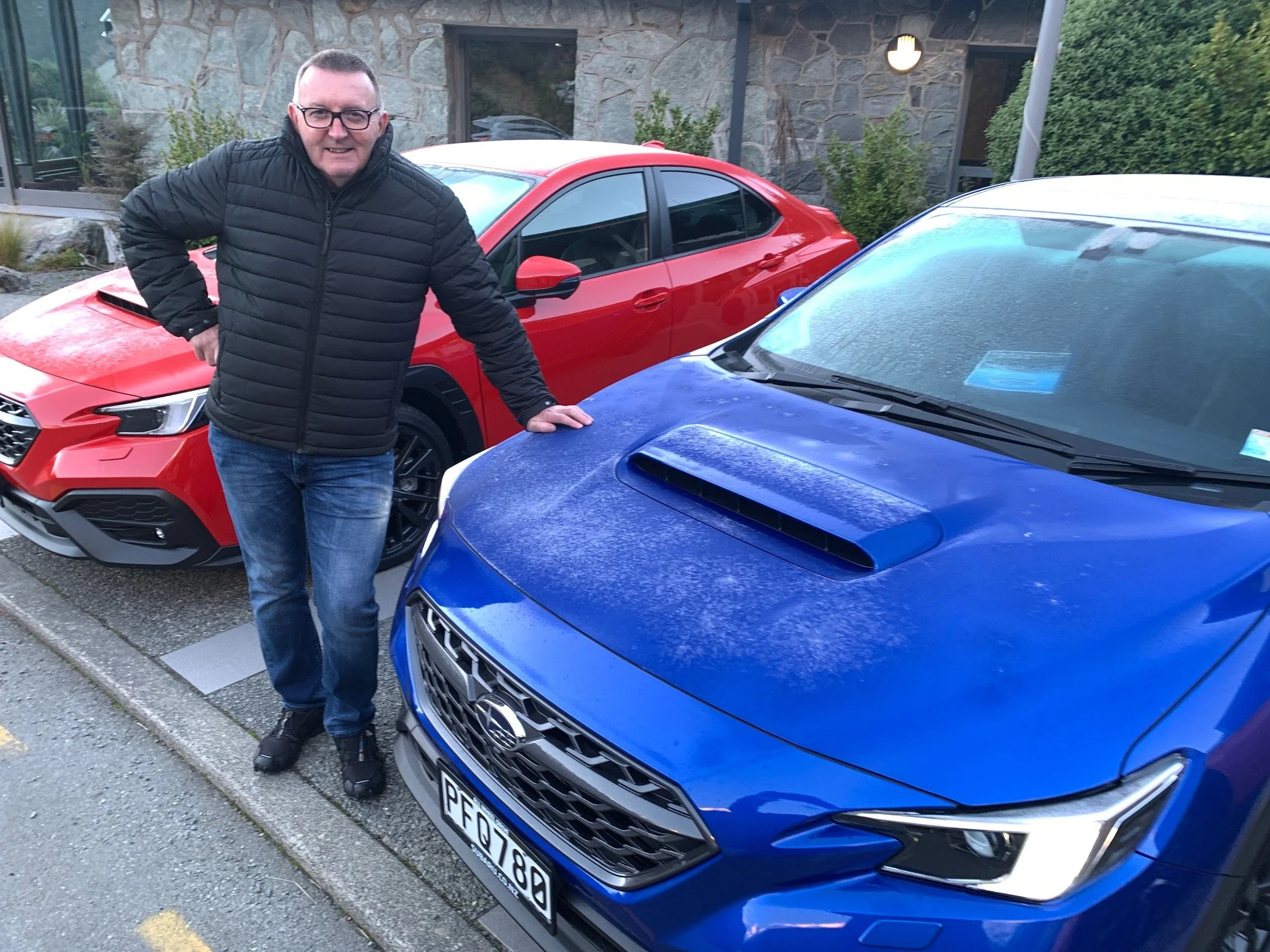Sunrise soon for Solterra
/First examples of groundbreaking Subaru electric will be here this year for show and tell, though on-sale cannot start before 2023.
SUPPLY constraints hampering its last fully fossil fuelled car, WRX, won’t hinder arrangements for Solterra, Subaru’s electric first step, with examples here before year end.
This from Subaru New Zealand boss Wallis Dumper,n(below) who says expressed Kiwi keenness to experience traditional Subaru off-road abilities with electric is a factor fuelling his operation’s push toward full electrification.
Customers are already asking dealers about Solterra and three have sought to lay down deposits, regardless pricing won’t be sorted for ages.
“We are not afraid to launch Solterra … it will bring a whole lot of other opportunity to our business. Already 20 percent of new car sales in New Zealand are electrified and it’s only going to grow further,” Dumper said at a media event yesterday.
His intent is to achieve at least several examples for demonstration and display this year, even though it won’t be on sale until 2023.
The cars Dumper is lining up to show to customers will be preceded by factory-run examples that’ll be here for sign-off trials at the highly-secretive Southern Hemisphere Proving Ground near Wanaka, potentially around August-September. Don’t expect to catch easy sight of those.
The five-seater crossover - whose name is a conjunction of the Latin words for ‘sun’ and ‘earth’ – was co-developed Toyota; Subaru’s contributing its all-wheel-drive expertise, its partner designing the powertrain, both working together on the styling.
The timing outlined by Dumper suggests his car will land, and potentially also avail, ahead of Toyota’s bZ4x, which Toyota NZ has also identified as being a 2023 entry.
The car has been designated as a fit into the ‘C’ class, the industry’s classification for a small but not-so-small model. The current Forester and Toyota RAV4 are essentially also C-rated.
The e-Subaru Global Platform (aka Toyota New Global Architecture) has a 71.4kWh lithium-ion battery pack integrated into a structure in the floor for a low centre of gravity and improved crash performance.
Solterra and bZ4x have common powertrains but Subaru NZ continues to indicate less interest in the front-wheel-drive model, with a 150kW electric motor and 530 kilometres’ range, than the all-wheel-drive flagship that has two 80kW electric motors, developing 160kW combined, 460kms’ range and a highly-advanced all-wheel-drive.
“Our intent is to lead our way into EV by being a bit different because that’s what we’ve always done.”
One emergent campaign to cement that Subaru is going boots and all into electric will be to highlight a special concept being developed by Subaru Technica International, STi, whose role as a tuner of high-performance versions of the WRX in particular has now curtailed.
It is now focused on electric products, starting with the STi ERA, a heavily winged coupe intended to reset the electric car record on Germany’s Nurburgring circuit, probably next year. It will be in an ad campaign with the tag line ‘so while you may not be able to own one today, it’s a sign of what’s to come.’
“We’re hoping that will set the scene, to get our brand loyalists moving towards EVs and then, when Solterra arrives, we will have an even more exciting campaign.
“Solterra is very interesting for us. We are not afraid to be launching it. People can be reluctant to accept change but Solterra is going to bring a whole lot of other opportunity.
“The percentage of electrified cars is ramping up, we would be putting our heads in the sand if we didn’t want Solterra. We actually wanted Solterra two years ago.
“Solterra is definitely coming. We have got it confirmed. I cannot be specific with dates … but we will have a Solterra here very soon. Winter is coming.”
Toyota intends to roll out five EVS on the TNGA platform within the next few years but Subaru has not indicated how many sibling models Solterra might spawn.
Dumper says like many distributors, Subaru of New Zealand can’t get enough cars to satisfy demand and there’s no chance of that changing any time soon.
“Not getting stock is a common theme throughout the industry. Our unfortunate situation is that we’ve got a problem for probably another 12 months.
“We have been doing quite a bit of digital marketing saying ‘order now to avoid disappointment’ and the horrible truth is that a whole lot of people are going to be disappointed.”
This was influencing WRX, very likely to be Subaru’s last ever fully fossil fuelled car and potentially one of the last high-performance internal combustion engine car to release in New Zealand.
The new model (below) is here in five choices, across sedan and wagon styles, priced between $59,990 and $64,990, with a 2.4-litre turbocharged petrol engine. Subaru has 50 in country and should achieve another 50 before year-end. That’s not enough, Dumper says, but is the best the factory can do. Every recipient country wants more.
“We have hundreds and hundreds of people on the waiting list for WRX, we have quite a lot of pre-sold, and they have priority for allocation, but we have a real challenge ahead getting stock.”
Dumper is cautious about Government’s push for rapid electric vehicle adoption and CO2 reduction – the political move here to meet, by 2026, targets car makers had expected to achieve in 2040 was a shock. “That’s sort of like, wag the dog, I don’t know how that us going to work.”
He questions the Clean Car Standard, saying it will see distributors passing on price rises to customers as they have to pay emission fees on a sliding scale, a scheme starting on January 1, 2023, and running to 2026.
In the case of WRX, which hits the market attracting an emissions penalty of between $1400 for the automatic and $3000 for the manual, prices will increase by thousands of dollars from the start of next year.
A decision years ago to stop chasing volume sales here has kept dealers profitable but that system always meant a lean stock holding, a situation worsened now by coronavirus all the associated issues from it.
On top of this, the market has been in highly volatile state for the past two years; his brand predicted there would be a crash in sales, but instead car sales soared. And soon brands couldn’t get enough.
“There wasn’t a crash in sales, there was just a crash in supply. The most stock we ever carry is one month, and that’s with the dealer network, and now sometimes we are down to one week. That’s not enough, you lose sales.”
His worry is what will happen when supply does resume to pre-Covid level.
“The dynamic I’m worried about is who will go crazy first? Before all this happened there used to be people who gave cars away at silly pricing and didn’t care about the supply line. Now they have all learned the supply line makes you reasonably profitable, so long as you get a reasonable supply of cars.”




















